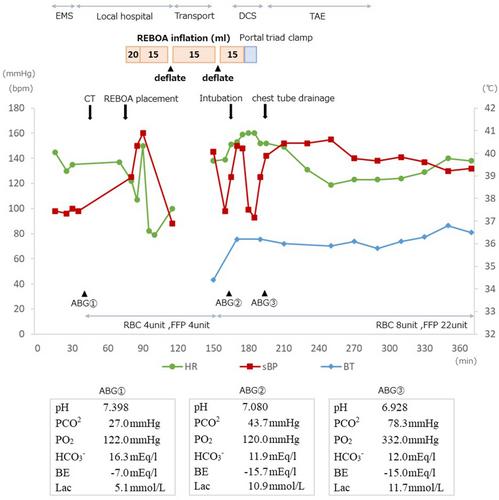Survival of a hemodynamically unstable pediatric liver trauma patient with aortic balloon occlusion catheter during air transport: A case report
IF 1.5
Q2 MEDICINE, GENERAL & INTERNAL
引用次数: 0
Abstract
Background
The utility of resuscitative endovascular balloon occlusion of the aorta (REBOA) in children remains unclear.
Case Presentation
An 11-year-old patient with liver trauma with massive extravasation was transported to a local hospital, where an emergency trauma surgery was unavailable. Following the placement of REBOA as a bridge to hemostasis, she was transferred to our hospital by a firefighting helicopter with balloon occlusion. Immediately, she underwent damage control laparotomy and transcatheter arterial embolization. She was subsequently discharged from the hospital 6 months after the accident without complications.
Conclusion
REBOA as a bridge to hemostasis may be useful for pediatric patients.

一名血液动力学不稳定的小儿肝脏外伤患者在空运过程中使用主动脉球囊闭塞导管后的存活情况:病例报告
背景 儿童主动脉血管内球囊闭塞复苏术(REBOA)的效用尚不明确。 病例介绍 一名 11 岁的肝脏外伤患者因大量外渗被送往当地一家医院,该医院没有急诊创伤外科。在植入 REBOA 作为止血桥梁后,她被消防直升机用球囊闭塞转运到我院。随即,她接受了损伤控制开腹手术和经导管动脉栓塞术。事故发生 6 个月后,她顺利出院,未出现并发症。 结论 REBOA 作为止血的桥梁可能对儿科患者有用。
本文章由计算机程序翻译,如有差异,请以英文原文为准。
求助全文
约1分钟内获得全文
求助全文

 求助内容:
求助内容: 应助结果提醒方式:
应助结果提醒方式:


